How to Save Money on Your Dream Bathroom Renovation
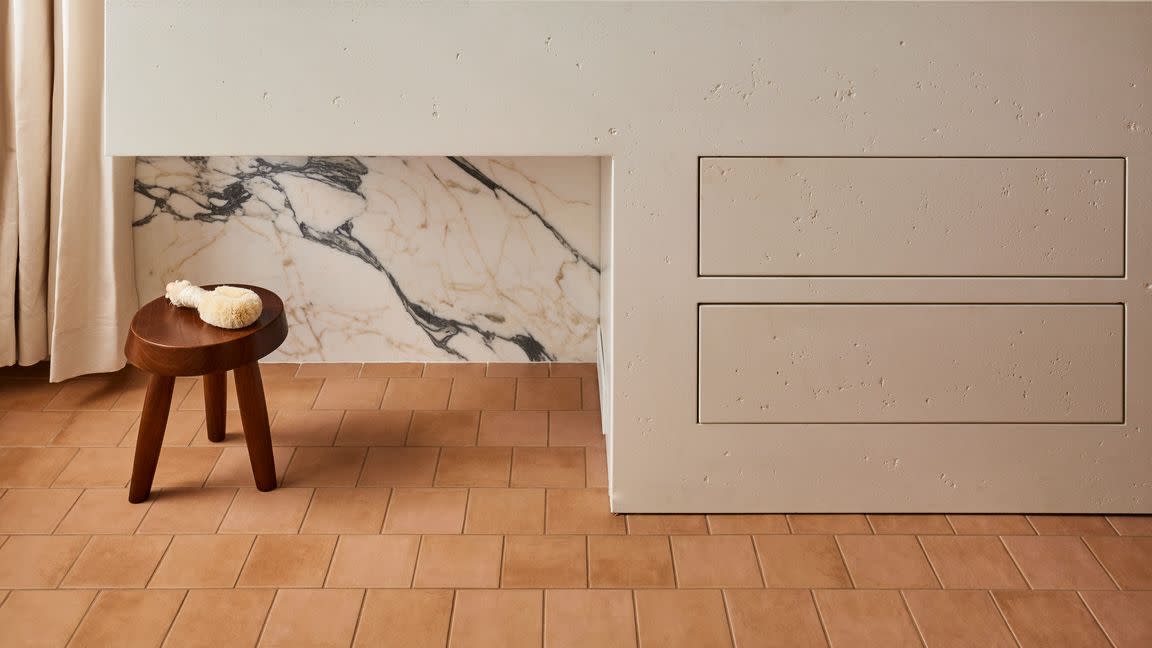
"Hearst Magazines and Yahoo may earn commission or revenue on some items through these links."
[table-of-contents] stripped
Your bathroom—the space where you get ready for the day, wind down, and everything in between—is a sanctuary. And if it isn't right now, it should be. Bathroom renovations are one of the best ways to boost your home's value and your quality of life.
Unlike building a home from scratch or painting the exterior, renovating a bathroom can mean a lot of different things. Maybe you just need to roll on a fresh coat of paint and install a new mirror; after all, even the smallest of bathrooms can be revamped without tearing down a wall. But if it's been decades since a full bath in your house got an update, it might need new fixtures, new tile, and maybe even a new layout.
Before you get started, Scott McGillivray, a home renovation expert and the host of the HGTV series Income Property, insists you should live in the space for at least a few weeks to see if the layout works for you, then figure out what work needs to be done. "Oftentimes, there's less changes than you'd think," he says. "The biggest mistake I see in DIY renovations is homeowners jumping the gun and gutting the space when it's not necessary." If you can't live in the space beforehand, that's when interior designer Jessica Helgerson directs homeowners to bring in a professional. "Hire a designer that specializes in space planning or renovations, because they'll know what works," she says. "Professionals can take away all of the guesswork."
No matter the scope of your bathroom renovation, it's not going to be free. In addition to McGillivray and Helgerson, we've also tapped New Jersey–based general contractor Michael McCue to offer some expert guidance. Read on to learn how much a bathroom renovation costs in 2024 and how to spend your money wisely.
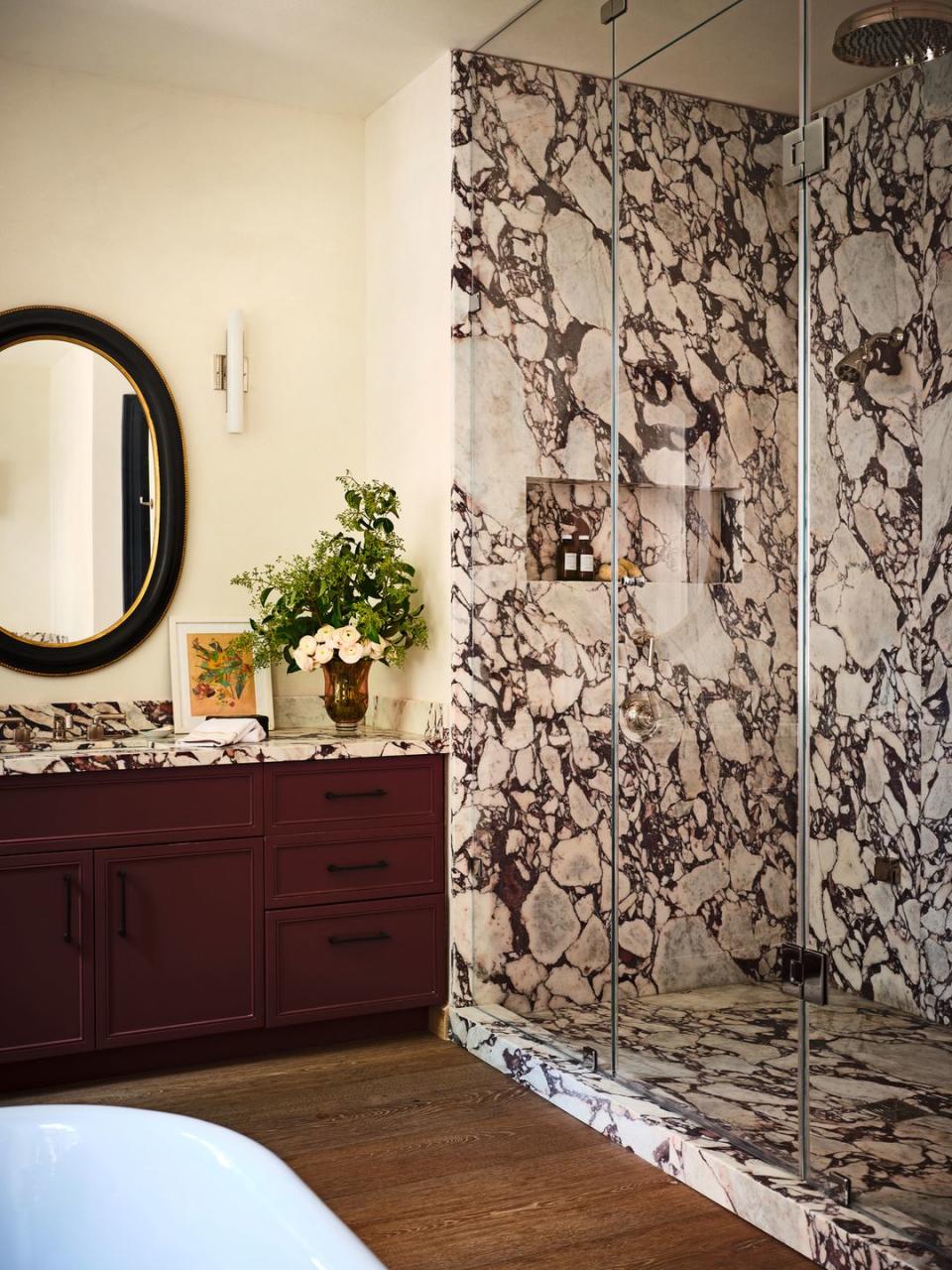
The cost estimates below combine our independent research with data from Angi and Home Advisor. Please note that these cost ranges are based on a national average and therefore will likely skew lower or higher depending on where you live.
How Much Does It Cost to Renovate a Bathroom?
Because bathroom sizes and material choices vary so widely, it can be hard to pin down the average cost of a bathroom renovation. The best way to get a ballpark is to look at the kind of bathroom you're renovating. For instance, a primary bathroom costs much more to remodel than a powder room or half bath.
The national average cost of a bathroom renovation is $11,509, with a wider range of between $6,600 and $16,900, according to Home Advisor. However, for a major primary bath remodel, a few homeowners can expect to spend more than $28,000 for luxury or custom materials and finishes. In terms of square footage, powder rooms are usually between 15 and 30 square feet, while half baths are more than 24 to 40 square feet in size. Below is a breakdown of the average cost by bathroom type.
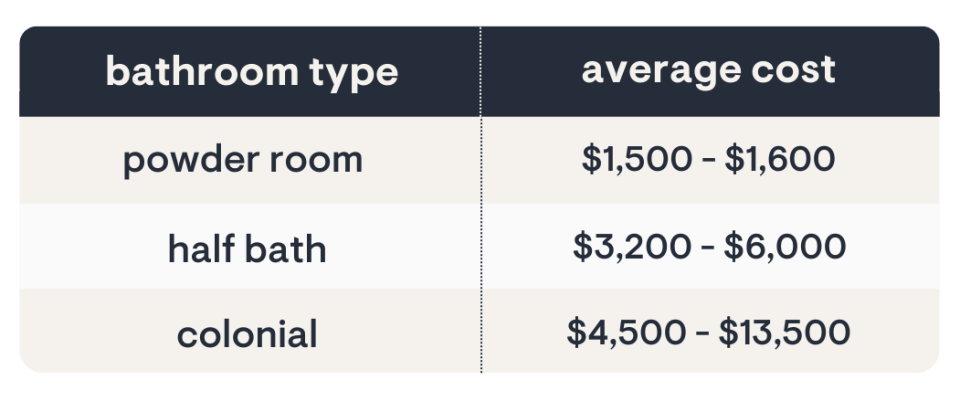
Bathroom Renovation Cost Breakdown
Whether you want to do a full remodel or are just looking to spruce up the fixtures or tiling, here's an estimate of what you'll need to budget for your project.
Faucets, showerheads, and even toilets fall under the plumbing fixtures category in a bathroom renovation. In total, you can expect to spend between $1,000 to $9,000 on a bathroom's worth of fixtures. That number can vary greatly because there are tons of options, from off-the-shelf fixtures to custom finishes, that can shift the price. On average, people spend around $4,000 on fixtures.
Sinks
When choosing a sink, keep in mind the type of vanity (or lack thereof) you have or want to have in your bathroom. Drop-in and undermount sinks are most compatible with a variety of vanity systems, while pedestal and wall-mount sinks are completely freestanding and don't need a vanity. A drop-in sink has a rim or edge that sits above the countertop, while an undermount sink is completely flush or sits just below the countertop's surface.
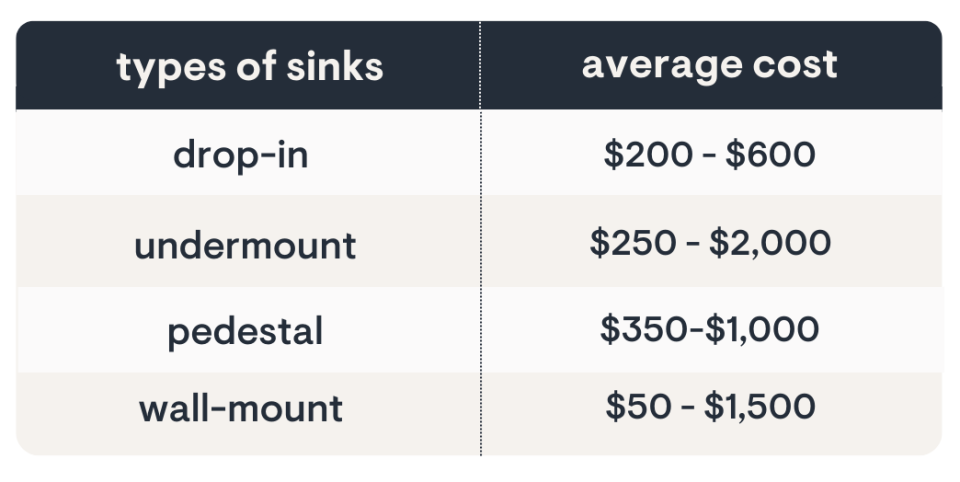
Shower and Bathtub
The difference between a half bathroom and a main or primary bathroom is that the latter has a shower, tub, or a combination of the two. Depending on your space and what you need, you can opt for a tub-and-shower combo, a walk-in shower, or a shower stall and a freestanding or separate tub setup.
McGillivray recommends a bath-fitter model for increased waterproofing. These systems slip over your existing bath or shower without the need for demolition. "It's the quickest and easiest way to get a new look without spending money on a gut demo," he says. For the ultimate luxurious experience, you can opt for a variety of upgrades (like a spa, soaking tub, steam system, or rain shower), but they'll raise your costs.
In all, you can expect to spend between $300 and $10,000, depending on sizes, materials, finishes, and styles. Read on for a breakdown of cost based on shower and bathtub type.
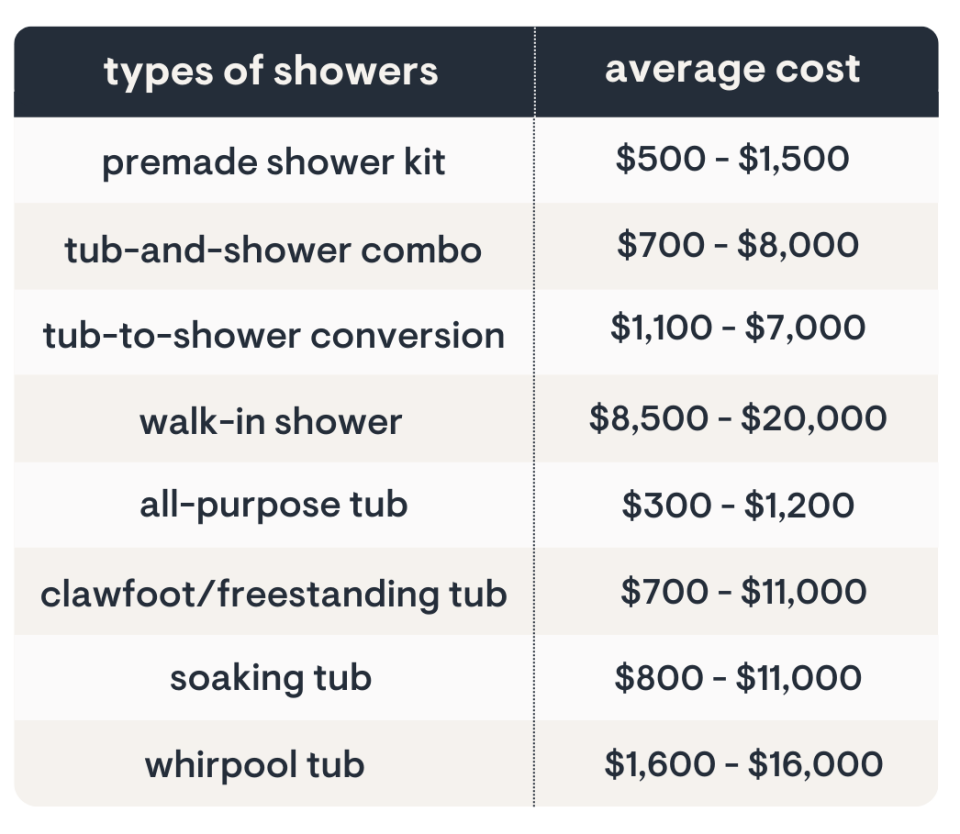
Toilet
You have many more toilet options than you might realize. Two-piece gravity-flush toilets are the most common (and most cost effective) type for home renovations. However, if you're looking to splurge, smart, heated, and wall-mounted toilets are more expensive options. A toilet typically costs between $150 and $450 on the low end.
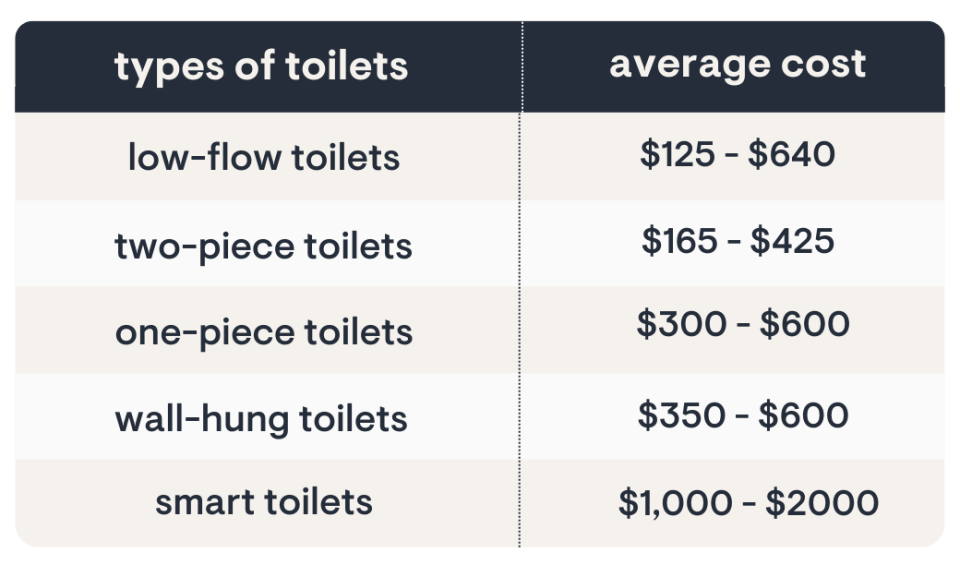
Flooring
Tile or stone floors are the most common (and the most durable) for bathrooms, while hardwood or laminate comes in a close second for popularity. "Wood has a tendency to warp in humid or wet conditions," says Helgerson. "There have been great advancements in the material, but I'd stick with stone or tile if you can." If you want radiant heating under your floors, installing it will add $12 to $65 per square foot to your budget. You can install radiant heat under most types of tile or stone but not under wood flooring.
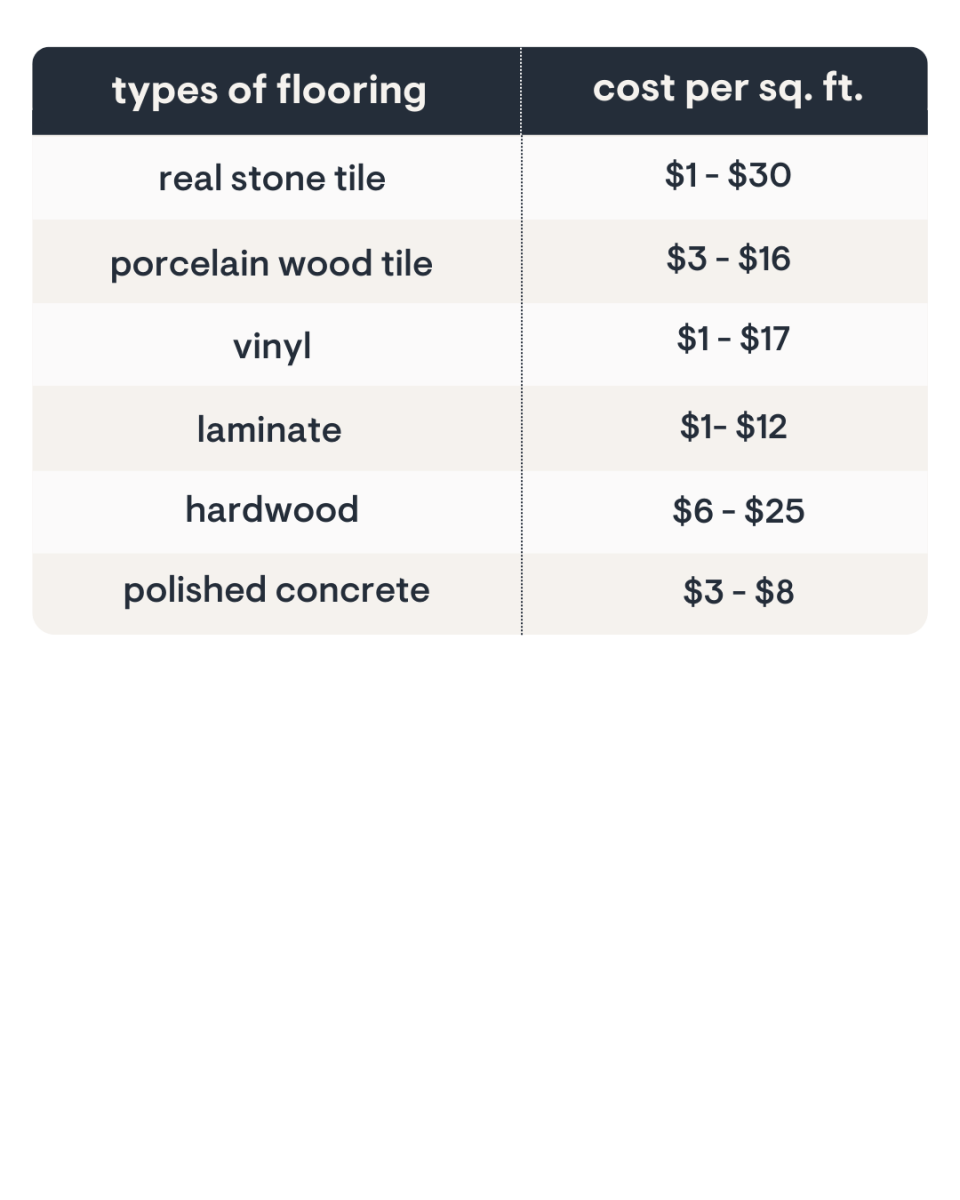
Tile
Whether you want to use a few as a sink backsplash or adorn your entire bathroom from floor to ceiling, using tile in your renovation is an easy way to make a design impact. But McCue warns that the tile available to today is often much more intricate and fragile than in previous decades, so professional tile installers are a must. "Depending on the type of tile, like glass tiles, we'll have to make our own end pieces and finishings," he explains. "So that must be factored into material costs as well." The average cost of tile installation is $2,000, but it can cost between $300 and $6,500, depending on the tile type and project size. Ceramic, porcelain, or travertine tile costs as little as $1 per square foot, while high-end cuts of marble can cost up to $350 per square foot.
Wallpaper and Paint
Tile is usually the primary material in a bathroom renovation, but you may not want to use tile allover. In that case, you need to budget for materials to finish the rest of the walls and the ceiling. Wallpaper can be tricky in high-humidity spaces because the extra moisture can loosen and melt the paste, causing the paper to peel away from the wall. If you want to use it in a bathroom with a tub or shower, consider covering only the top third of the walls, above more resilient tile or wainscoting—and be prepared to remind your family members to turn on the exhaust fan. Basic wallpaper costs between $18 to $40 per roll, but custom and luxury rolls can cost more than $500. Paint, however, is much cheaper, ranging from $20 to $70 per gallon. If your bathroom is small, a gallon might be all you need.
Hardware
To keep your new bathroom functional and organized, you'll need towel bars, towel rings, cabinet knobs, shelving, a toilet paper holder, a handle for the shower door—all types of hardware. Different finishes and designs vary in cost. You can buy a coordinating set from The Home Depot for as little as $40, or opt for luxury or custom fittings for $500 and up.
Shower Doors/Enclosure
While some people prefer a shower rod and curtain to protect the rest of their space from water splashes, you can also opt for a more expensive shower door or enclosure. Or you can inset the shower in its own little nook and forgo doors and curtains altogether—a design feature that's becoming more popular with designers these days and that is also a smart choice for long-term accessibility. The average price for replacement bathroom doors ranges from $300 to $1,400, depending on whether you want tempered glass, frosted glass, custom sizing, and custom hardware.
Countertops
Bathroom countertops can be less durable than kitchen counters because they take less wear and tear, but they do need to be more water resistant. (Wood isn't a great option.) Depending on the material, expect to pay between $350 and $4,000 for a countertop. This cost also depends on the size and number of fixture holes you need.
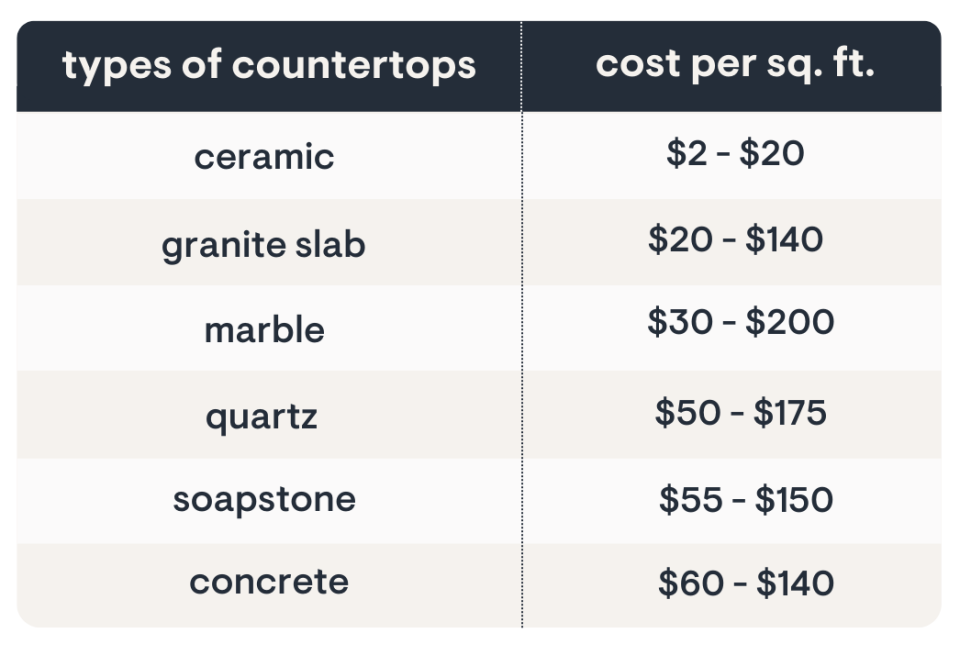
Ventilation
Your bathroom needs proper ventilation to protect it from mold and mildew. Replacing an exhaust fan costs around $180 to $600. If you need to install a new exhaust fan, expect your cost to increase to $1,000 to account for the additional insulation or ductwork needed to vent the fan out the roof of your house.
Plumbing
Plumbing in a bathroom is an essential cost and one that you always want to be done correctly. We recommend hiring a professional plumber to install your beloved new fixtures and take some stress off your back. Sometimes all you need is a pesky leak fixed, whereas in a gut renovation you may be moving the plumbing fixtures around to shift the layout. A standard repair can cost between $150 and $3,500. A full layout change will cost between $1,000 and $6,500.
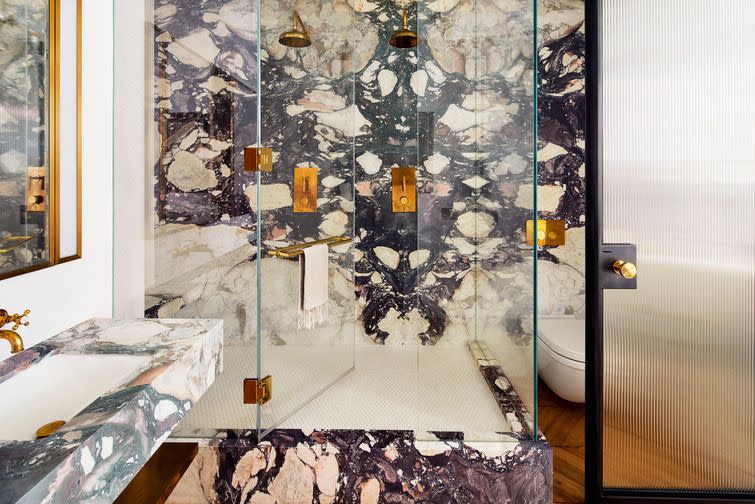
Waterproofing
Waterproofing the wet area of your bathroom (i.e., the part that's designed to get wet, like the shower and bathtub) also call for a plumber. Wet area costs typically range from $2,000 to $5,000, depending on the selected bathroom fixtures, installations, and any custom designs. If you want to waterproof the entire bathroom and turn it into a wet room, expect to spend more like $10,000 to $20,000.
Lighting
Adding new light fixtures will add between $200 to $1,000 to your overall cost. You can save money by opting to keep your fixtures in the same place and simply swapping them out for new ones.
Cabinetry
A new vanity cabinet, whether you opt for single or double, typically will cost you between $400 and $4,000. This includes units with additional storage, basic table vanities, and ones with built-in outlets. Of course, custom furnishings can range further in price.
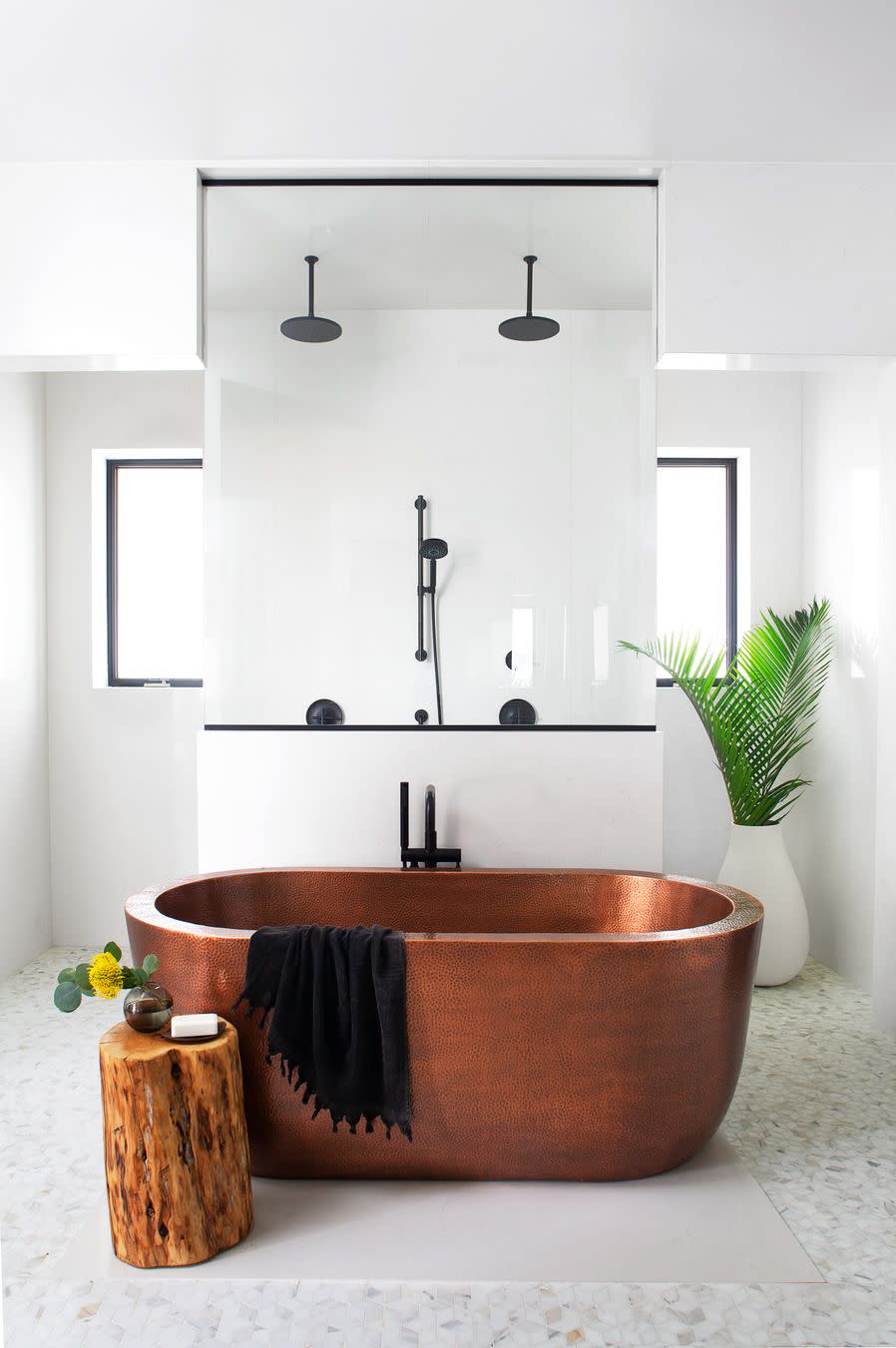
Factors That Might Affect Cost
Demolition and Dumpsters
Before the new can come in, the old must come out. Whether you hire a demo team (usually included with a general contractor) or opt to do this dirty job yourself, you'll need a dumpster to cart everything away. According to dumpsters.com, the average cost of a dumpster rental nationwide is $596, with typical prices ranging between $250 to $1,115. This price can vary based on location, duration, and dumpster size.
Permits
Anticipate spending between $175 and $2,000 to cover permits. Prices vary significantly by location and scope of your project. A general contractor will typically handle applying and paying permits for you, then add them to your total.
ADA Compliance
If you've purchased what you want to be your forever home, it's important to renovate your bathroom with aging in mind. Simple swaps like adding a handrail to the shower wall, opting for a walk-in shower rather than a tub, and choosing lever handles instead of knobs can quickly make your bathroom a more accessible one. These swaps may cost more than simpler models but will last you longer and save you future changes as you get older.
Unforeseen Repairs
When renovating a bathroom, you may uncover things like mold or rotten plumbing that must be taken care of before you can move forward. It's important to either add a budget line for unforeseen issues or add a buffer to your budget to ensure these common problems don't derail your project.
Assembling Your Team
Depending on the scope and complexity of your project, you may opt to DIY it instead of hiring a professional team. To help you plan your project and get great results, we want to give you a clear sense of what to expect from each route. Hiring professionals can not only ease your worries and save you time but also ensure the job gets done well—especially if it's on the more complicated side. "You'll want to hire people who have a lot of expertise and reviews," says McCue. "Make sure they're used to working with high-end materials if your renovation uses them. Experience is key." Common professionals needed for a bathroom renovation are a general contractor, plumber, electrician, and interior designer.
Do It Yourself
Because labor typically makes up 40 to 50 percent of your total costs, opting to do some or all of the renovation work yourself can (theoretically) save you quite a bit of money. However, if you're not experienced in the world of construction and home repairs, it can cost you more in the long run if you make mistakes that need to be repaired down the line. Doing it yourself will also almost certainly take longer since there won't be a dedicated team on the job day in and day out—just you in your spare time. If you want to go the DIY route, we recommend doing the simple stuff yourself—painting, wallpapering, replacing light fixtures, and maybe laying tile—and leaving the serious work for pros to do quickly and well.
Be Your Own General Contractor
One step beyond a full DIY, you can choose to be your own general contractor and hire subcontractors (plumbers, electricians, tile layers, etc.) and manage them yourself. This requires a lot of oversight and tracking of invoices, but the actual labor portion of the project will be hands-off.
According to Angi, plumber rates range from $1,000 to $2,000 total. Electrician rates range from $50 to $100 per hour, and interior designer rates are between $150 and $500 per hour.
General Contractor
Hiring professionals can be expensive, but if you're planning an extensive bathroom remodel, it might be worth hiring someone to oversee the process for you. Professionals can mitigate a lot of your stress, and you can rest assured that they know what they're doing. You can also look to your general contractor to handle the inevitable mishaps that pop up during or even after the job. General contractor rates range from $300 to $400 per day, according to Angi.
Interior Designer, Architect, and General Contractor
If you’re opting for a full gut renovation that includes layout changes or taking down a wall, you’ll want an architect in addition to a general contractor. An architect can ensure all additions are measured properly, adhere to building codes, and make your dream bathroom a reality via floor plans and mockups. Add on an interior designer, and material mistakes and mismatched finishes won't even be a possibility. They will handle all elements related to the look and feel of your space, from the layout to the paint colors.
How to Save Money During a Bathroom Renovation
Bathroom renovations can be overwhelming and costly, but there are straightforward ways to save money and avoid going overbudget. "The biggest expense in a bathroom renovation is trying to change the layout," says McGillivray. "If you can avoid that, you're on the right track."
Know what you want and begin with a solid design and clear plan of action.
Keep the existing layout to avoid the costs of rewiring and changing plumbing.
Opt for only cosmetic changes such as new faucets and hardware, a fresh coat of paint, or new accent pieces.
Refinish your fixtures instead of buying new ones.
Limit trendy finishes limited to soft goods that are easily swapped, like your towels and shower curtain. Helgerson suggests this to prevent a bathroom from looking dated quickly and to ensure it requires fewer changes (i.e., more costs) in the long run.
DIY what you can yourself, including demolition, prep work, painting, tiling, hardware installation, and cleanup.
Bathroom Remodel FAQ
How Long Does It Take to Renovate a Bathroom?
How long a renovation takes largely depends on the scale of the project. If you're going for a cosmetic renovation or a paint refresh, you could finish the job on a weekend. However, a gut renovation can take up to three months or longer.
How Does a New Bathroom Affect the Value of My Home?
According to Zillow, a midrange bathroom remodel has a national average return on investment (ROI) of 56.2 percent, while an ADA-accessible bathroom renovation has an ROI of 70.6 percent, and an upscale bath remodel has an ROI of 54.6 percent. A bathroom reno is typically more valuable to the current homeowner than prospective buyers.
How Much Does a Walk-In Shower Cost?
The average cost of a walk-in shower ranges from $8,500 to $20,000 depending on size, finishes, and material choices.
What Is the Most Expensive Part of a Bathroom Remodel?
If you choose to use professionals, the most expensive part of a bathroom remodel is the cost of labor. Labor typically takes up nearly half (if not more) of a total budget. Other than labor, the most expensive factor in a bathroom renovation is choosing to change the layout. This requires moving the plumbing and electrical and potentially making structural changes, which is all quite expensive.
You Might Also Like

